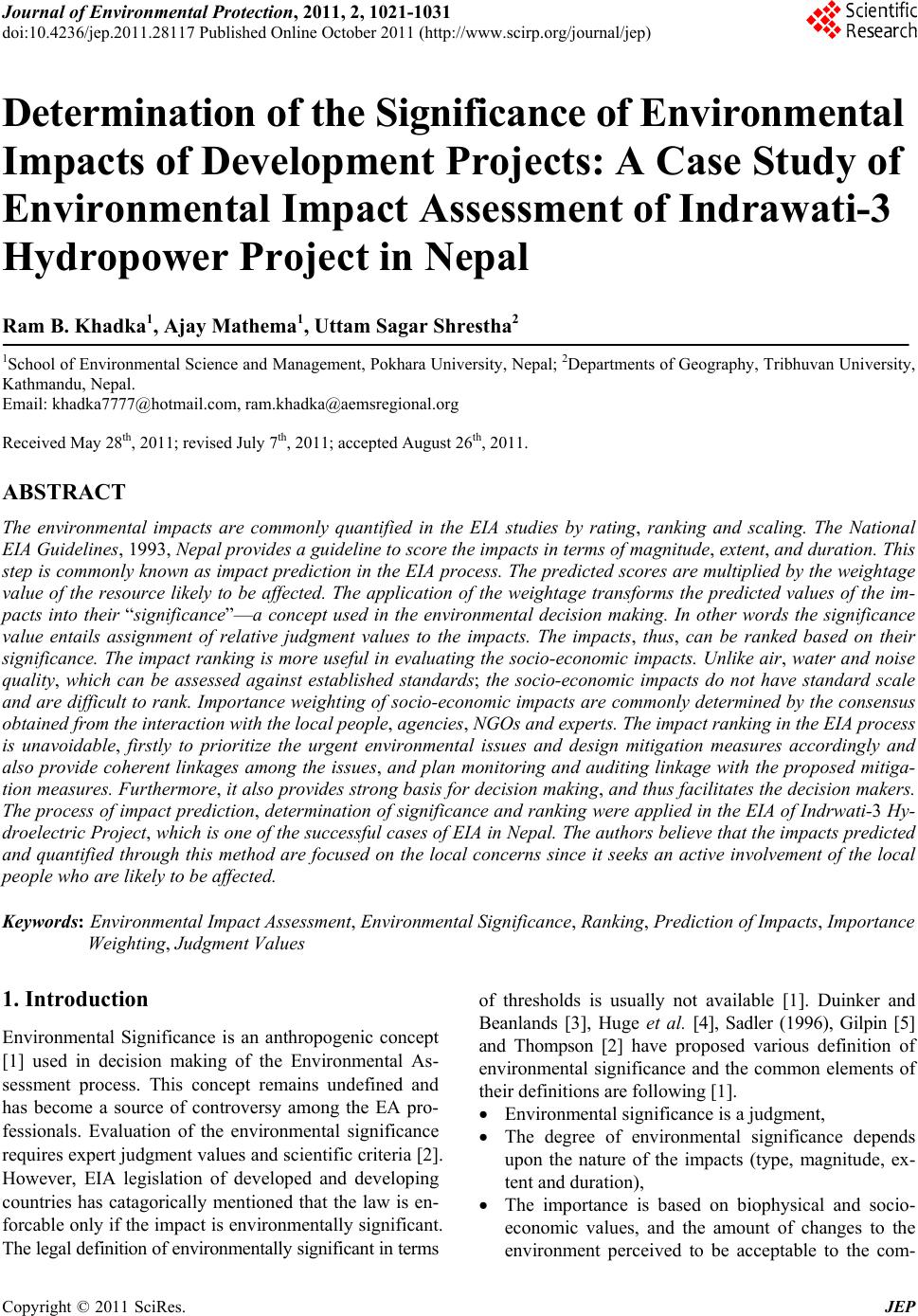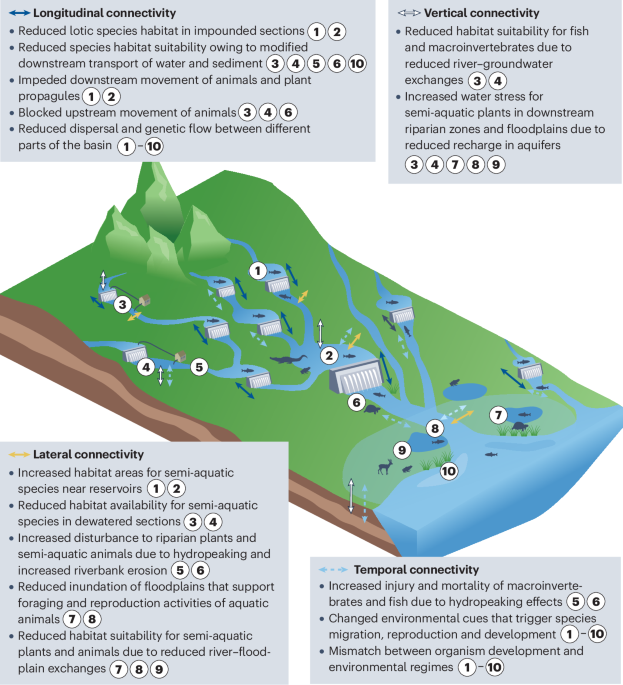Imagine standing by a serene river, its water flowing gracefully, a source of life and energy. Now, picture the power it holds to light up cities and transform landscapes.
Hydropower promises sustainable energy, yet its impact on the environment is profound. You might wonder how such a natural force can affect ecosystems and communities. That’s where Environmental Impact Assessment (EIA) comes into play. It’s your tool to understand the balance between harnessing energy and preserving nature.
This assessment uncovers the hidden stories behind hydropower projects, ensuring they tread lightly on the earth. Dive deeper into this essential process and discover how it shapes your world.

Hydropower And The Environment
Hydropower uses water to make electricity. This can help the environmentby reducing pollution. But it can also harm it. Building dams can change river paths. This affects fish and plants. Some animals might lose their homes. Hydropower is a clean energysource. It uses less fossil fuel. But it can cause problems too. Water flow changes can lead to erosion. It can also affect water quality. It’s important to balance power needs with nature.
Ecosystem Alterations
Hydropower can change natural habitats. Dams stop rivers from flowing freely. This can affect plants and animals that live there. Some species might lose their homes. Others might find it hard to survive. Large areas can get flooded. This changes the land forever. Forests and fields may turn into lakes. Animals need to find new places to live. It’s a big change for them.
Fish and other water creatures can be affected. Dams block fish from swimming upstream. This is where they lay their eggs. Some fish cannot reach these places anymore. Fish ladders can help, but not always. Water quality can also change. Less oxygen means fish can struggle to breathe. Some creatures cannot live in such water. They might die or move away. This affects the whole food chain.
Water Flow Changes
Hydropower can change river flows. Dams hold water back. This changes how fast water moves. Rivers might have less water. Sometimes, they might have too much. Fish and plants need steady water flow. Changes can harm them.
Sediment moves with water in rivers. Dams block sediment. This can cause sediment to build up. Downstream, there might be less sediment. This affects riverbanks and animal homes. Sediment is important for soil health. Without it, plants might not grow well.
Greenhouse Gas Emissions
Evaluating hydropower’s environmental impact involves understanding greenhouse gas emissions. Dams can release methane from submerged plants. These emissions affect climate change and need careful assessment. Balancing hydropower’s benefits and environmental costs is crucial. This ensures sustainable energy solutions for the future.
Methane Release
Methaneis a powerful greenhouse gas. It traps heat in the air. Hydropower can cause methane release. Dams flood land with water. Plants die and rot underwater. This process releases methane into the air. More methane can mean more warming.
Hydropower is often seen as clean energy. But methane release challenges this idea. Methane is stronger than carbon dioxide. It warms the planet faster. Monitoring methane is important for hydropower projects.
Carbon Sequestration
Carbon sequestrationmeans storing carbon. Trees and plants absorb carbon dioxide. They help keep the air clean. Building dams can flood forests. This stops carbon sequestration. Less carbon is stored in plants.
Hydropower can affect carbon storage. Flooded areas lose plants. Less carbon is absorbed. It’s crucial to balance energy needs with nature. Protecting forests helps store carbon. It reduces greenhouse gases.
Social And Cultural Impacts
Hydropower projects reshape local societies and cultures. They may affect traditional practices and community dynamics. Environmental assessments evaluate these changes, aiming to minimize disruptions and support sustainable development.
Community Displacement
Hydropower projects can cause people to lose their homes. Families may have to move to new places. This can be very hard for them. They leave behind friends and familiar surroundings. Building dams can flood lands where people live. Their old homes might be underwater. New places may not feel like home. This can lead to sadness and stress. It takes time to adjust to new communities. People may miss their old ways of life.
Cultural Heritage Sites
Hydropower projects can affect cultural sites. These sites tell important stories. Dams can cover these sites with water. Cultural heritage can be lost forever. Preserving history is important. People lose connections to their past. Artifacts might be damaged or destroyed. Protecting these sites is vital. Communities may feel a loss of identity. Finding new ways to preserve history is crucial. Respecting culture helps everyone.

Regulatory Framework
Policy guidelines help manage hydropower projects. They focus on protecting the environment. Rules ensure projects are safe and friendly to nature. Guidelines cover water use, wildlife safety, and community rights. These rules are important for project success. They guide builders in planning and construction.
Compliance can be tricky for hydropower projects. Rules are strict and must be followed. Sometimes, rules change and create confusion. Builders face challenges in meeting all requirements. Delays happen if rules are not clear. Fines can be given for rule-breaking. Good planning helps avoid these issues. It ensures projects meet all standards.
Mitigation Strategies
Every hydropower project needs a plan. An Environmental Management Planhelps. It tracks and manages impacts. These plans protect nature. They keep rivers clean. They also protect fish and wildlife. Workers must follow these plans. They check water quality. They monitor air pollution. They also manage waste. This ensures safety and health.
Restoration projects bring nature back. They help plants and animals. These projects fix damaged lands. They plant new trees and bushes. They also clean rivers and lakes. This helps fish and birds. Volunteers often help too. They plant and clean. This makes a big difference. It helps nature heal. And it keeps our planet healthy.

Future Prospects
Hydropower uses water to make electricity. New technology helps it work better. Smart systems can control the flow of water. This saves energy. Sensors can check the health of machines. Machines break less often. Drones can inspect dams safely. They help find problems early. Solar panels can work with hydropower. They make clean energy together. These innovations make hydropower more efficient and reliable.
Hydropower is a clean energy source. It does not pollute air. It helps fight climate change. Proper planning protects nature and animals. Fish ladders help fish swim past dams. Trees can be planted near dams. This helps wildlife. Careful use of land reduces harm. Hydropower supports green growth. It creates jobs and supports communities. It helps people live better without harming the planet.
Frequently Asked Questions
What Is An Environmental Impact Assessment?
An Environmental Impact Assessment (EIA) evaluates the potential environmental effects of a proposed project. It helps in identifying, predicting, and mitigating negative impacts on the environment. For hydropower projects, EIA assesses effects on water quality, aquatic life, and local communities, ensuring sustainable and environmentally friendly development.
Why Is Eia Important For Hydropower?
EIA is crucial for hydropower to ensure sustainable development. It identifies potential environmental risks and suggests mitigation strategies. By assessing impacts on ecosystems, water resources, and communities, EIA helps avoid adverse effects, promoting eco-friendly energy production and compliance with environmental regulations.
How Does Eia Affect Local Communities?
EIA assesses the impact of hydropower on local communities, focusing on social and economic factors. It evaluates potential displacement, changes in water access, and impacts on livelihoods. By addressing these concerns, EIA ensures that hydropower projects are socially responsible and beneficial to surrounding communities.
What Are The Steps In The Eia Process?
The EIA process involves several steps, starting with screening and scoping. It includes impact assessment, public consultation, and the development of an Environmental Management Plan. Finally, it involves monitoring and reporting to ensure compliance and the effectiveness of mitigation measures in hydropower projects.
Conclusion
Assessing hydropower’s environmental impact is crucial. It ensures minimal harm to nature. This process helps balance energy needs with ecological protection. Communities benefit from cleaner energy and preserved habitats. Policymakers can make informed decisions. By understanding these impacts, we promote sustainable development.
Hydropower, when responsibly managed, supports a greener future. Awareness and careful planning are key. Sustainable practices protect both energy supplies and the planet. So, let’s prioritize smart choices in energy projects. Together, we can achieve harmony between progress and nature.
Your role in this is vital. Stay informed and proactive for a healthier environment.
Read More:
- Best Home Water Filtration Units: Top Picks for Clean Water
- Diy Hydroponic Grow System Guide: Cultivate Success
- Mini Hydro System Feasibility Study: Unlocking Eco Solutions
- Chemical Dosing Pump Pricing Guide: Maximize Your Investment
- Diaphragm Pump Cost Comparison: Affordable Options Unveiled
- Hydroelectric Dam Maintenance Cost Analysis: Cutting Costs
- Commercial Water Filtration System Cost: Save Money Today
- Diaphragm Pump Maintenance Tips: Ensure Peak Performance
